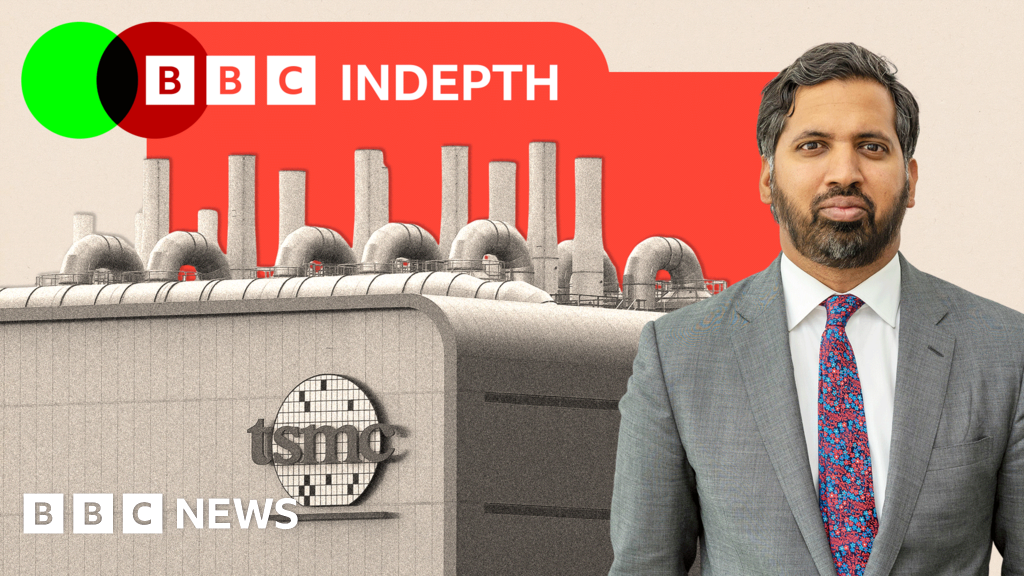- Food
The Netherlands returns 119 stolen sculptures to Nigeria
时间:2010-12-5 17:23:32 作者:Crypto 来源:Venture Capital 查看: 评论:0内容摘要:"[The movement's] officials, who are hardened activists, enter into a relationship with the local authority… Social norms – the veil, beards, dress, fasting - are gradually imposed as the ecosystem solidifies," the authors write."[The movement's] officials, who are hardened activists, enter into a relationship with the local authority… Social norms – the veil, beards, dress, fasting - are gradually imposed as the ecosystem solidifies," the authors write.
Our analysis of the imagery shows significant development at one of the sites in south-west Gaza, close to the ruins of a village that is now an Israel Defense Forces (IDF) base.Satellite photos since early April show the construction of a road there and a large staging area, surrounded by berms - large defensive barriers made of piled sand or earth - about 650m (2,130ft) from the border with Egypt.

A high-resolution image captured on 8 May shows bulldozers and excavators working on a section of land spanning about 20 acres (8 hectares). IDF armoured vehicles are at a fortified building nearby.A photo taken on site, geolocated by BBC Verify, also shows lighting being installed on the perimeter.Further imagery from 11 and 12 May shows this, along with three other sites, continuing to expand. One site is about half a kilometre from a collection of eight UN warehouses, and 280m from another large warehouse.

Stu Ray - a senior imagery analyst with McKenzie Intelligence - agreed the sites were likely to be secure distribution centres. He noted that some of the facilities are in "close proximity to IDF Forward Operating Bases which ties in with the IDF wishing to have some control over the sites".Analysts with another intelligence firm, Maiar, said the facilities appeared to be designed with separate entrances for trucks to move in and out, and with other gaps in the berms that would be suitable for pedestrian entrances.

The IDF did not comment on the potential aid centres when approached by BBC Verify, but said that its operations in Gaza were carried out "in accordance with international law". Cogat - the Israeli body responsible for managing crossings into Gaza - did not respond to a request for comment.
Three of the four sites located by BBC Verify are south of the IDF's newly created Morag Corridor.In another incident on Tuesday, a paramedic said his ambulance was shot at by an Israeli drone while he was transporting staff and food between al-Awda and Kamal Adwan hospitals.
Khaled Sadeh said he was with another ambulance when bullets hit both vehicles' windshields. Nobody was injured.Dr Salha shared photos of the ambulances and confirmed that Mr Sadeh was unable to return to al-Awda because of the threat of Israeli fire.
The BBC supplied details of the allegations and photos to the IDF, but it said it "could not confirm" the reports.Hospitals and medical personnel are specially protected under international humanitarian law.
- 最近更新
- 2025-07-07 05:07:25Jigsaw: Cute and CuddlyPlayMasque Publishing
- 2025-07-07 05:07:25Bird Word MahjonggPlayMasque Publishing
- 2025-07-07 05:07:25Who wins, who loses if Trump’s ‘One Big Beautiful Bill’ passes?
- 2025-07-07 05:07:25Solitaire: YukonPlayMasque Publishing
- 2025-07-07 05:07:25Palestine Action are not terrorists. Israel is
- 2025-07-07 05:07:25Trump’s fragile peace in the Middle East
- 2025-07-07 05:07:25‘Climbing Everest’: How Al Hilal’s win over Man City was a milestone
- 2025-07-07 05:07:25Solitaire: Classic Flip 3PlayMasque Publishing
- 热门排行
- 2025-07-07 05:07:25Bill Nighy, Mathew Horne, WWE’s Jordynne Grace Board Fantasy Film ‘Welcome to Paradis…
- 2025-07-07 05:07:25This screen-free toy is a hit with kids — and totally worth it for parents
- 2025-07-07 05:07:25deadliest plane crash in the U.S
- 2025-07-07 05:07:25In Gaza, the Israelis are staging Hunger Games
- 2025-07-07 05:07:255-Ingredient Sesame Tomato Salad
- 2025-07-07 05:07:25Over 300 sheep storm a California street and fill the road after getting loose
- 2025-07-07 05:07:25Monthly Statistical Snapshot, May 2025
- 2025-07-07 05:07:25As Israel-Iran war escalates, Ukraine fears ‘more losses’ to Russia
- 友情链接
- Boeing CEO cancels airshow visit as investigation starts on India crash Why India refused to join SCO condemnation of Israel’s attacks on Iran Niger to nationalise uranium mine operated by French state-affiliated firm African manhood is broken – and it’s costing women their lives Amid US-Pakistan thaw, two key challenges: Iran and China India says it will ‘never’ restore Indus Waters Treaty with Pakistan Syria church bombing kills 25, dozens wounded Emotional South Africa beat Australia sealing first major cricket title US lawmakers condemn Trump for ‘unconstitutional’ attack on Iran US attacks Iran: How Trump rejoined ‘team’ Netanyahu Boeing CEO cancels airshow visit as investigation starts on India crash US strikes Iran in ‘Operation Midnight Hammer’ Which teams are in the Club World Cup knockouts, and who can still make it? Lake Chad Basin: Violence and displacement The Netherlands returns 119 stolen sculptures to Nigeria Niger to nationalise uranium mine operated by French state-affiliated firm India says it will ‘never’ restore Indus Waters Treaty with Pakistan UN warns of starvation in ‘hunger hotspots’ ‘I realised I was alive’: Sole survivor of Air India crash recounts tragedy African manhood is broken – and it’s costing women their lives US strikes Iran, what comes next? ‘Thithi president!’: Supporters rally for banned Ivorian opposition hopeful Lake Chad Basin: Violence and displacement At least 100 people killed as gunmen attack Nigeria’s Benue: Rights group Photos: Kenyan police shoot bystander at close range during latest protests Is Trump planning an ‘Africa visa ban’? “Will Israel accept” Iran if it’s not a nuclear threat? Emotional South Africa beat Australia sealing first major cricket title Al Jazeera Centre for Public Liberties & Human Rights Sounds familiar: Was this said about Iraq in 2003, or Iran in 2025?
